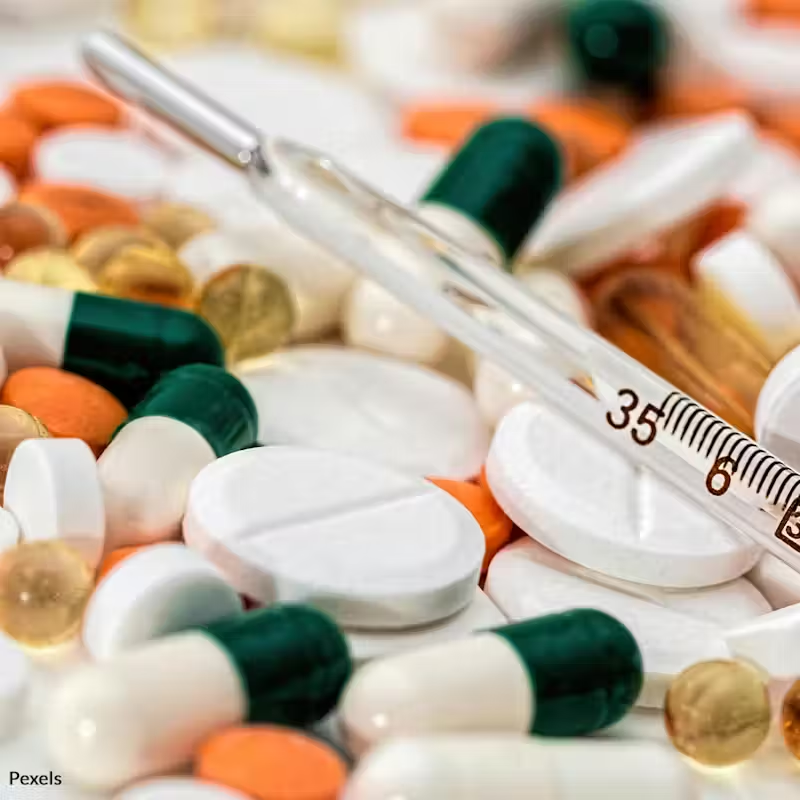Save Wildlife from Harmful Pharmaceutical Waste
7,760 signatures toward our 30,000 Goal
Sponsor: The Animal Rescue Site
Pharmaceutical waste is silently poisoning our ecosystems, threatening wildlife and biodiversity; urgent action is needed to protect our planet and ensure a sustainable future.

Pharmaceutical waste is silently wreaking havoc on our environment. Drugs designed for human benefit persist in ecosystems, causing significant harm to aquatic and terrestrial organisms.
This problem demands urgent attention and immediate action.
Unseen Contaminants in Our Waterways
Pharmaceutical residues are now ubiquitous in the environment. These contaminants come from improper disposal of medications, agricultural runoff, and wastewater from pharmaceutical manufacturing plants. Aquatic environments, in particular, suffer from continuous exposure to these pollutants. Pharmaceuticals enter water systems through wastewater treatment plants, which do not fully remove these bioactive compounds. This results in contaminated rivers, lakes, and streams, posing a risk to aquatic life1.
Impact on Aquatic Wildlife
The effects of pharmaceuticals on aquatic organisms are well-documented. Exposure to antidepressants, for example, alters the behavior of fish, making them less cautious and more susceptible to predators2. Endocrine-disrupting chemicals in these drugs cause reproductive issues, such as the feminization of male fish, leading to population declines and even local extinctions3. Brown trout exposed to methamphetamine in waterways develop addictive behaviors, disrupting predator-prey dynamics and the overall health of aquatic communities4.
Terrestrial Wildlife Also at Risk
Terrestrial wildlife is not immune to pharmaceutical pollution. Livestock medicated with various drugs excrete these compounds into the environment, where they accumulate in the soil and water systems. This contaminates crops and exposes wildlife relying on these resources to harmful substances5. One of the most tragic examples is the near-extinction of vulture populations in India, caused by diclofenac, a non-steroidal anti-inflammatory drug used in livestock. Vultures ingested the drug by feeding on treated cattle carcasses, leading to widespread kidney failure and death6.
Need for Advanced Wastewater Treatment
Technology to mitigate this pollution exists, but implementation is inconsistent. Advanced treatment methods can remove up to 95% of pharmaceutical contaminants from wastewater5. However, the high cost and energy requirements of these systems make them less accessible, especially in developing countries. Improving wastewater treatment infrastructure globally is crucial to reducing pharmaceutical pollution. Policymakers and environmental managers must prioritize investments in advanced treatment technologies and enforce stricter regulations on pharmaceutical waste disposal. Public awareness campaigns can educate individuals about proper medication disposal to prevent environmental contamination.
Designing Greener Pharmaceuticals
To address the root cause of pharmaceutical pollution, the pharmaceutical industry must reform drug design and production. Developing greener pharmaceuticals that break down more easily after use can significantly reduce their environmental impact. This requires collaboration between scientists, drug manufacturers, and regulatory bodies to ensure new drugs are both effective and environmentally friendly4.
Pharmaceutical pollution is a growing environmental concern that demands immediate action. Both aquatic and terrestrial species suffer from exposure to these contaminants, leading to behavioral changes, reproductive issues, and population declines. Advanced wastewater treatment and the development of greener pharmaceuticals are essential steps toward mitigating this problem. By prioritizing environmental health, we can protect our ecosystems and the diverse species that inhabit them.
Join us in urging the Environmental Protection Agency to enforce stronger regulations on pharmaceutical wastewater to protect our wildlife and ensure a sustainable future. Sign the petition now.
- United States Environmental Protection Agency (26 February 2024), "Impact of Pharmaceuticals Released to the Environment."
- Jake M. Martin, Michael G. Bertram, Paul J. Blanchfield, Jack A. Brand, Tomas Brodin, Bryan W. Brooks, Daniel Cerveny, Malgorzata Lagisz, Isaac Y. Ligocki, Marcus Michelangeli, Shinichi Nakagawa, Jack T. Orford, Josefin Sundin, Hung Tan, Bob B. M. Wong, Erin S. McCallum, Environmental Evidence Journal (18 October 2021), "Evidence of the Impacts of Pharmaceuticals on Aquatic Animal Behaviour."
- Kathryn E. Arnold, A. Ross Brown, Gerald T. Ankley, and John P. Sumpter, NCBI (19 Nov 2014), "Medicating the Environment: Assessing Risks of Pharmaceuticals to Wildlife and Ecosystems."
- Patrick Greenfield, The Guardian (6 June 2024), "Drug Pollution Wildlife Threat."
- Cate Twining-Ward, Colin Chapman, Mongabay (18 January 2022), "For Pharmaceuticals Fouling Wastewater and Wildlife Solutions Exist."
The Petition:
To the Administrator of the Environmental Protection Agency,
I am writing to you today to urgently request the implementation of stronger regulations on pharmaceutical wastewater to protect our precious aquatic and terrestrial ecosystems.
Pharmaceutical residues have become pervasive contaminants in our environment. These compounds, originating from improper disposal, agricultural runoff, and wastewater from pharmaceutical manufacturing plants, are entering our waterways and causing severe harm to aquatic organisms. Fish, invertebrates, and amphibians, which live continuously in these contaminated waters, are particularly vulnerable. Studies have shown that exposure to pharmaceuticals can lead to altered behavior, reproductive issues, and even local extinctions in these species.
The impacts extend beyond aquatic life. Terrestrial wildlife, including those reliant on contaminated crops and water sources, are also at risk. For example, the widespread use of diclofenac in livestock has led to the near-extinction of vulture populations in India, highlighting the far-reaching consequences of pharmaceutical pollution.
Despite the availability of advanced treatment methods that can remove up to 95% of pharmaceutical contaminants, the inconsistent implementation of these technologies, especially in developing countries, poses a significant barrier to effective mitigation. It is imperative that the EPA enforce stricter regulations on pharmaceutical waste disposal and invest in the necessary infrastructure to safeguard our environment.
By taking decisive action, we can protect vulnerable species, maintain biodiversity, and ensure the health of our ecosystems. Strengthening these regulations will pave the way for a safer, healthier future for all.
Thank you for considering this critical issue.
Sincerely,